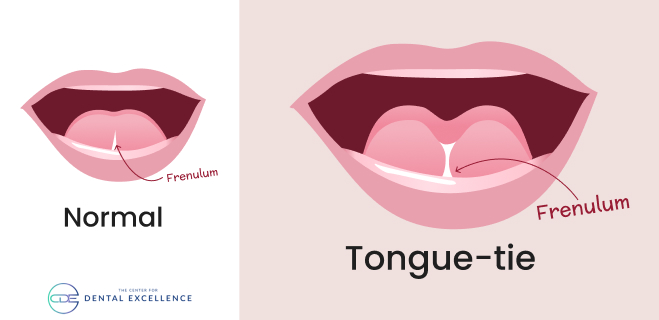As parents, we’re constantly making decisions about our children’s health and well-being. When it comes to lip and tongue ties, what might seem like a minor concern now could have significant implications for your child’s future oral health and overall quality of life.
Let’s explore what happens when these common conditions go untreated.

What Exactly Are Lip and Tongue Ties?
If you’ve noticed your baby struggling with feeding or your toddler having speech difficulties, lip and tongue ties might be the culprits. These conditions—medically known as ankyloglossia (tongue tie) and labial frenulum restriction (lip tie)—occur when the small bands of tissue connecting the tongue to the floor of the mouth or the lip to the gums are too tight or restrictive.
Think of these tissue bands like elastic bands that are too short. When they don’t have enough give, they limit movement and function. For babies and children, this restriction can affect much more than you might initially realize.
While these conditions are often identified in infancy, particularly when breastfeeding challenges arise, they sometimes go unnoticed or untreated. This is where potential long-term issues can begin to develop.

The Domino Effect on Oral Development
When lip and tongue ties remain untreated, they can trigger a cascade of oral health issues that extend far beyond the initial feeding difficulties:
Dental Development and Alignment
That little band of tissue might seem inconsequential, but it can actually influence how your child’s teeth grow. A restrictive lip tie, particularly an upper lip tie, can contribute to something we dentists call a diastema—a gap between the front teeth. While some gaps are normal in developing mouths, persistent large gaps may require orthodontic treatment later.
More concerning is how tongue ties affect the overall shape of the dental arch. When tongue movement is restricted, it can’t properly rest against the roof of the mouth, which is crucial for normal palate development. Over time, this can lead to a high, narrow palate, crowded teeth due to insufficient space in the jaw, increased need for extensive orthodontic treatment, and potential for improper bite alignment.
Speech and Communication Challenges
Your child’s ability to articulate certain sounds depends significantly on tongue mobility. When a tongue tie restricts movement, it can lead to persistent speech difficulties with sounds that require tongue elevation like “l,” “r,” “t,” “d,” and “n.” Children may also struggle with sibilant sounds like “s,” “z,” and “sh,” resulting in overall unclear speech that may affect confidence and social interactions.
These challenges don’t always resolve on their own. In fact, we often see school-aged children who have developed compensatory speech patterns that can be difficult to correct without addressing the underlying tongue tie first. Many children require long-term speech therapy when ties remain untreated through the critical language development years.
Oral Hygiene Complications
Have you ever tried cleaning something with your hands tied? That’s somewhat similar to what happens when trying to maintain oral hygiene with untreated ties. Restricted movement can make it difficult to clear food debris from certain areas of the mouth and properly brush all surfaces of the teeth.
The tongue naturally helps clean the mouth after eating, but when its movement is restricted, food particles may remain trapped in places that are hard to reach. This can result in increased cavity risk in these areas, earlier onset of gingivitis and gum disease, chronic bad breath, and more plaque buildup around the front teeth, particularly with lip ties.
Eating and Nutritional Considerations
Beyond infancy, untreated ties can continue to affect eating habits in ways that might surprise you. Children may develop difficulty managing certain food textures, leading to what parents often describe as “picky eating.” They might struggle with using utensils that require tongue control and experience messy eating due to a reduced ability to clear food from the lips.
Many parents don’t connect their child’s eating challenges with a possible tongue or lip tie, especially if feeding improved after infancy. However, these subtle difficulties can persist and affect your child’s relationship with food for years to come. In some cases, these limitations can even lead to nutritional concerns if children consistently avoid certain healthy food groups due to difficulty managing them.

Beyond the Mouth
The impact of untreated lip and tongue ties extends beyond just oral health. Research continues to uncover connections between restricted oral tissues and other body systems.
Sleep Quality and Breathing
A proper tongue position is essential for maintaining open airways during sleep. When the tongue cannot rest properly against the roof of the mouth due to restriction, it may fall back toward the throat during sleep. This positioning can contribute to mouth breathing, which has its own cascade of effects on facial development.
Children with untreated tongue ties may have an increased risk of sleep-disordered breathing and potential development of sleep apnea symptoms. The resulting poor sleep quality often manifests as chronic fatigue, irritability, and attention issues that parents might not immediately connect to an oral restriction.
Neck and Posture Effects
In an effort to compensate for limited tongue movement, some children develop altered head and neck postures. Over time, this compensation can lead to tension in the neck and shoulder muscles anda forward head posture. As children grow into adolescents and adults, these compensatory patterns may contribute to temporomandibular joint (TMJ) issues and chronic headaches or facial pain.
When and How to Address Lip and Tongue Ties
If you’re reading this and concerned about your child, know that it’s never too late to address lip and tongue ties. While early intervention is ideal, treatment can be beneficial at any age.
For infants and very young children, the procedure (called a frenectomy) is typically simpler and healing is often faster. The earlier the treatment, the fewer compensatory patterns develop, and results for feeding improvement are often quickly noticeable.
For older children and adolescents, treatment may need to be combined with myofunctional therapy to retrain proper tongue position and function. Speech therapy may be recommended before and/or after the procedure, and orthodontic evaluation may be needed to address any developmental issues that have already occurred.
The good news is that modern techniques, including laser frenectomies, have made treatment more comfortable and recovery faster than ever before. Many children experience immediate improvement in tongue and lip mobility, though it takes time and sometimes therapy to develop full function.
Taking the Next Step for Your Child’s Oral Health
As parents, we all want what’s best for our children, and sometimes that means being proactive about issues that might affect them later in life. If you suspect your child might have a lip or tongue tie—even if they seem to be “managing fine” right now—consider scheduling an evaluation with a dentist experienced in identifying and treating oral restrictions.
Ask about the potential long-term implications specific to your child’s situation and inquire about collaboration between dental care and other specialists like speech therapists or myofunctional therapists. Remember that addressing these issues isn’t just about solving current problems—it’s about preventing future ones.
Your child’s smile is precious, and their ability to speak, eat, and breathe comfortably affects every aspect of their life. By understanding and addressing lip and tongue ties appropriately, you’re giving them the gift of better oral health and function for years to come.
Ready to learn more about how we can help your child? Contact our office today to schedule a comprehensive evaluation of your child’s oral ties and development. Your proactive decision today could save them from years of unnecessary challenges tomorrow.